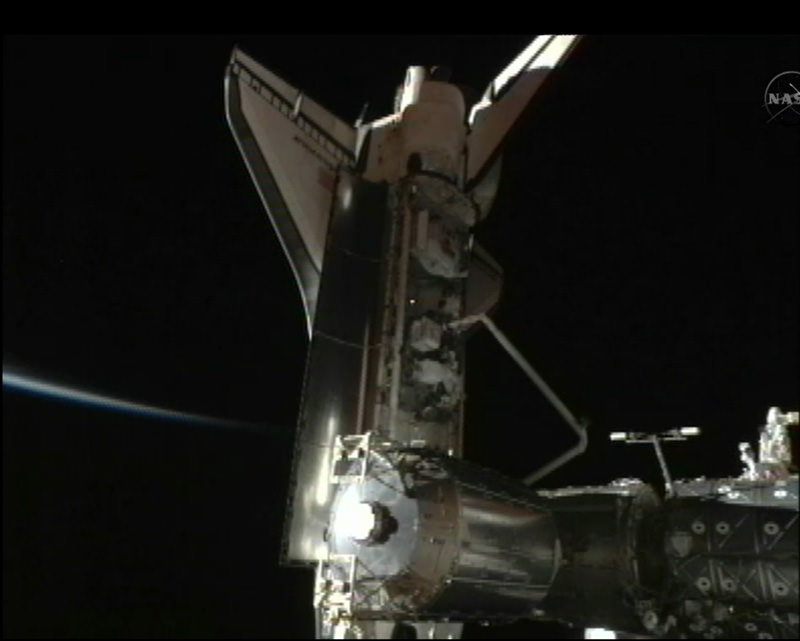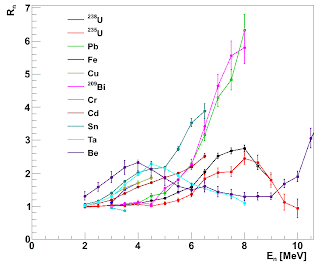Tuesday, May 31, 2011
Summer has begun!
Well, OK, not by the calendar, officially. However, the students appeared today to start the REU (Research Experience for Undergraduates) season and the rest of the faculty funded separately from this materials science program are also up to full speed.
Wednesday, May 25, 2011
Goodbye Spirit
Spirit, the scrappy robot geologist that captivated the world with its antics on Mars before getting stuck in a sand trap, is about to meet its end after six productive years.
Spirit has been incommunicado for more than a year despite daily calls by NASA. The cause of Spirit's silence may never be known, but it's likely the bitter Martian winter damaged its electronics, preventing the six-wheel rover from waking up.
See the full story at the NYT.
Wednesday, May 18, 2011
Endeavour Docks at the Space Station
Monday, May 16, 2011
Last Launch of Endeavour
From the NASA web site:
The crew members for space shuttle Endeavour's STS-134 mission are Commander Mark Kelly, Pilot Gregory H. Johnson and Mission Specialists Michael Fincke, Greg Chamitoff, Andrew Feustel and European Space Agency astronaut Roberto Vittori.
During the 16-day mission, Endeavour and its crew will deliver the Alpha Magnetic Spectrometer (AMS) and spare parts including two S-band communications antennas, a high-pressure gas tank and additional spare parts for Dextre.
The final flight honors go to Atlantis on STS-135. The target date for the launch is June 28.
Friday, May 13, 2011
A Better Way To Teach Physics?
Tell someone that you're an 'astrophysicist' and the reaction that I typically get is "physics?! You must be so smart to spend your life studying that subject. I hated physics in school.” Of course, momentary ego-boost aside, what you're really being told is that these otherwise intelligent folks had a frustrating, intimidating experience with a subject I love. So how best to teach physics?
Usually faculty teach physics the way they were taught. Hey, if it was good enough for them, it's good enough for you too! But this traditional "teaching-by-telling" or "sage-at-the-stage" approach just doesn't work! Over the past several years, much research has been done to determine how students learn and how best to teach them (much of it lead by physicists!). The model that has emerged is one in which students are engaged and are active participants in the classroom rather than passive note-takers. One popular method used here at JMU and other institutions is via "clickers" (remote polling devices) to gauge student understanding and to identify misconceptions immediately. The idea is to confront students head-on with their misconceptions so that you can replace the incorrect model they have in their mind with the correct one. Many studies have shown this "intense engagement" to better performance as measured on tests, and one would hope, better understanding. However, as you might imagine, there are many questions that arise in determining whether this active method is truly better than the lecture method.
In a research article published in today's Science, a group of investigators purport to provide a "clean comparison" between the active, student-centered approach versus the traditional, teacher-led approach. The research was conducted by a team at the University of British Columbia in Vancouver and is led by physics Nobelist Carl Wieman. Wieman has devoted the past decade to improving undergraduate science instruction, using methods that draw upon the latest research in cognitive science, neuroscience, and learning theory. What they did was take two large first-year introductory engineering physics classes (one class had 267 students while the other had 271) and teach one section using this "deliberative practice" approach (really just means clickers plus group tasks) while the other section was taught by a "motivated faculty member with high student evaluations" using the standard lecture format. Before the experiment, the instructors for both sections agreed to cover the same unit on electromagnetic waves and on what learning objectives would be covered. A typical 50-min class in the experimental section consisted of a clicker question, instructor feedback, another clicker question, more feedback from the instructor but students can then discuss and change their vote. This was followed by a group task with a demonstration and another clicker question. After 1 week (3 1-hour classes), both sections were given the same 12-question multiple choice test. The students in the "active" section scored more than twice as well as those in the "passive" control section. Just as importantly, 90% of the respondents in the "active" classroom agreed with the statement "I really enjoyed the interactive teaching techniques during the three lectures on E&M waves". So how physics is taught does make a difference!
This is an interesting result and clearly more work is left to be done! To read more about this work, check out this article from Science Now which summarizes the work and its impact. The New York Times presents a more critical review of the work.
Thursday, May 12, 2011
Unbelievable View of Our Galaxy
What would you see if you could see at levels thousands of times more faint than the dimmest star? That's the question that astrophotographer Nick Risinger set to answer. The result, after stitching together nearly 37,500 exposures, is a 5,000 megapixel photograph of the entire sky. What dominates is our beautiful, Milky Way Galaxy, home to our Sun and our solar system.
What an incredible mosaic! Check it out: http://media.skysurvey.org/interactive360/index.html
Posters in California
On May 2, James Hauver and William Henderson presented posters on their work from the summer of 2010 on photoneutron production with polarized gamma rays. Linearly polarized gamma rays provide a new window into these reactions and are particularly interesting for the student of fissile nuclides.
The targets Jimmy and William studied are Ta and Sn. The interesting observable is the ratio of the neutron yield in the plane of polarization divided by the yield at right angles to the beam polarization direction. This ratio, R, is a function of photon and neutron energy and provides a characteristic response for nuclei that is often enough different from other nuclei that some identification of the target can be made. This is particularly true for fissile material.
More targets will be studied this summer including La, Ce, Dy, and Hg.
The targets Jimmy and William studied are Ta and Sn. The interesting observable is the ratio of the neutron yield in the plane of polarization divided by the yield at right angles to the beam polarization direction. This ratio, R, is a function of photon and neutron energy and provides a characteristic response for nuclei that is often enough different from other nuclei that some identification of the target can be made. This is particularly true for fissile material.
More targets will be studied this summer including La, Ce, Dy, and Hg.
Saturday, May 07, 2011
2011 Graduation
Graduation went off without a hitch. we had fine weather and a great group of students to launch into the world. You'll notice many Sigma Pi Sigma sashes in the photo. This is great class and we are mighty proud of them. See the rest of the photos here.
This means that spring semester is (nearly) done. All grades are due in a day or two. Folks are ramping up for the summer research experience.
As we add new faculty, we have the experience of a young faculty member having their first experience in a graduation ceremony from the faculty perspective. This year it is Giovanna Scarel's turn.
She certainly enjoys the experience.
Stay tuned for the summer of physics and astronomy.
This means that spring semester is (nearly) done. All grades are due in a day or two. Folks are ramping up for the summer research experience.
As we add new faculty, we have the experience of a young faculty member having their first experience in a graduation ceremony from the faculty perspective. This year it is Giovanna Scarel's turn.
She certainly enjoys the experience.
Stay tuned for the summer of physics and astronomy.
Subscribe to:
Posts (Atom)





